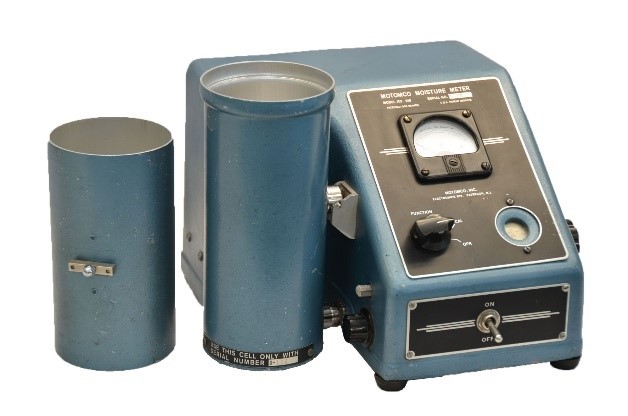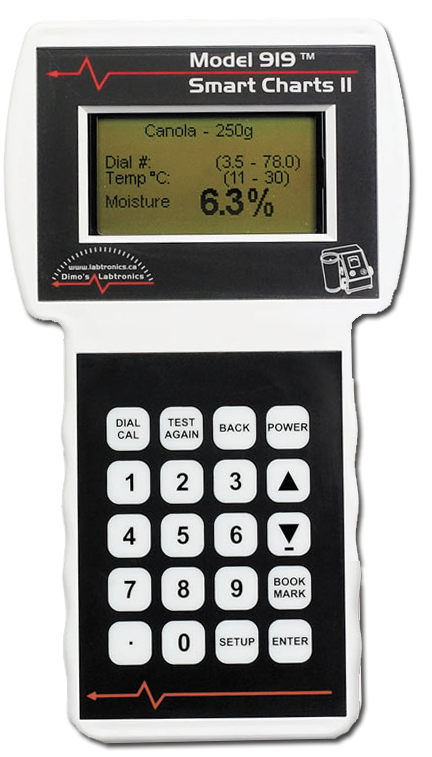Analog Model 919
manual moisture meters
The Model 919 is an analog meter. The moisture value of the grain is determined by the dial reading and temperature of the grain being tested.
The components of a 919 meter work as a single unit. This means the dump cell, test cell, body, and power cord are not interchangeable with other units.
You perform a simple calibration before determining the dial reading for the grain sample. This step is necessary because the value you read on the dial is affected by your viewing position. Performing this calibration regularly helps ensure you read the dial correctly.
To calibrate the moisture meter:
- With the meter in CAL (calibration) mode, use the right-side knob to move the dial to 53.
- Use the small left-side knob to move the needle as far as possible to the left.
To perform a moisture test:
- Use a scale to weigh the proper amount of clean grain for the commodity being tested. Refer to the CGC conversion table for this information.
- With the grain sample in the dump cell, insert a thermometer into the grain and wait until the temperature reading is static. Be sure the thermometer is not resting on the bottom of the cell. Record the temperature.
- Release the grain sample from the dump cell to the test cell.
- With the meter set to OP (operate) mode, use the knob on the right side to move the needle to the left as far as possible. Read the number from the dial.
- To determine the moisture result, refer to CGC’s conversion table and find where the grain temperature and meter reading values intersect.

Dimo’s / Labtronics Automated Smart Chart II for Model 919 manual moisture meters
The Automated Smart Chart II is a time-saving device that eliminates the need to refer to paper conversion charts when using a Model 919 moisture meter.
Simply choose the commodity, enter the grain temperature and drum dial value, and the moisture percentage is displayed on the screen.
Conversion charts available from the Canadian Grain Commission provide moisture values for grain temperatures between 11 °C and 30 °C. The Automated Smart Chart II accepts temperatures outside of this range.

